CONSTANZA CAMILA KRAMER GARFIAS
backwards along the river
8. February - 29. March. 2025
CURRICULUM VITAE
REQUEST PREVIEW
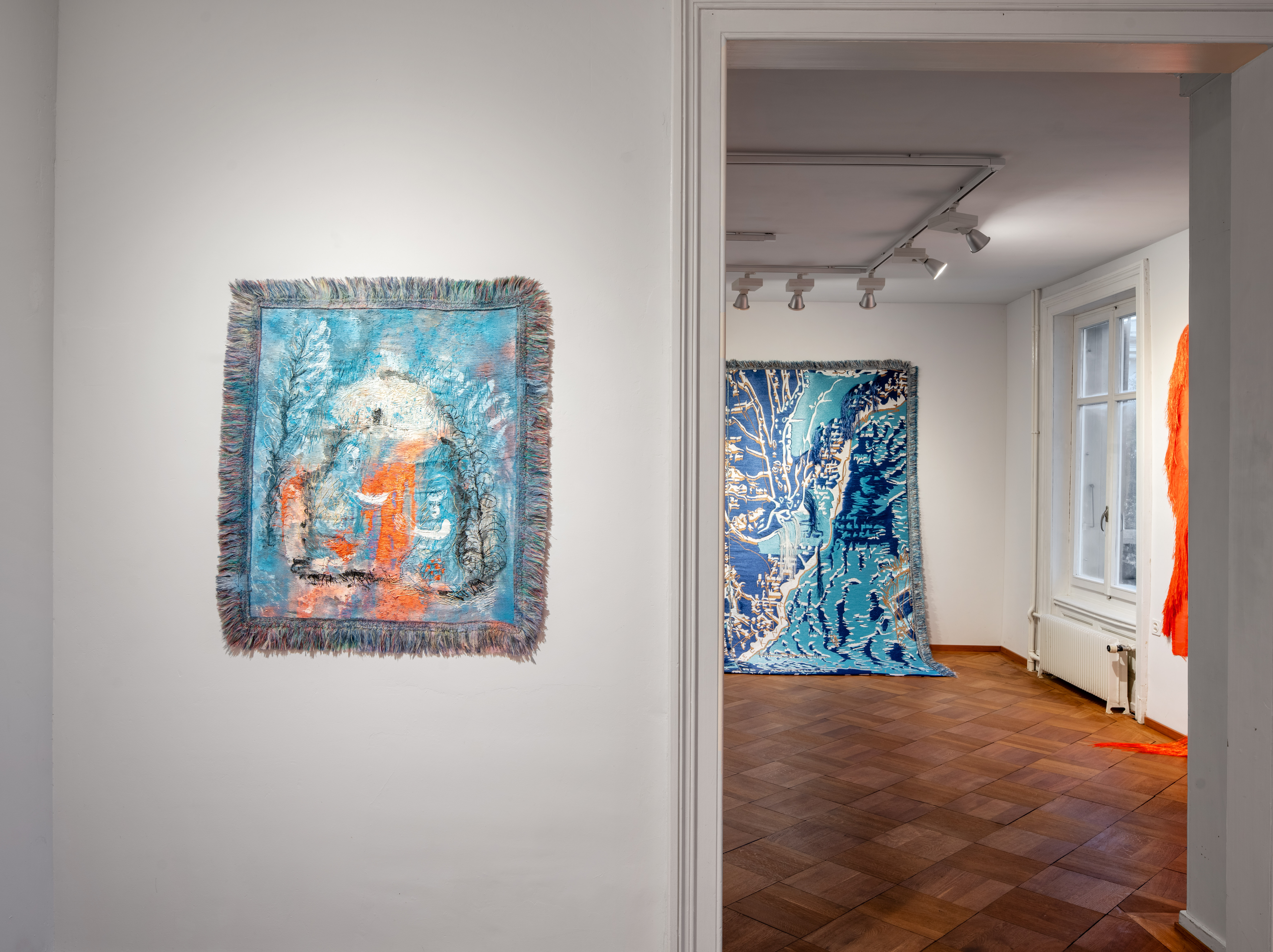
PRESS RELEASE
We are pleased to present Constanza Camila Kramer Garfias’ first solo exhibition with the gallery, after joining our program in 2024.
In backwards along the river, Constanza Camila Kramer Garfias critically examines the colonial historiography of Patagonia and its visual representations. She begins with Ferdinand Magellan’s expedition report from 1520, in which he described the indigenous peoples of Patagonia as “giants” due to their unfamiliar appearance. His spurious tall tales morphed into mythology and then solidified into European cultural truth, ultimately justifying the horror show that was the European conquest of the ‘Americas.’ Based on historical records and engravings, Kramer Garfias has created a series of large-scale jacquard and raffia works appropriating the visual conventions of colonial-era travelogues. In them, she playfully and thoughtfully dismisses and responds to their trumped-up depictions of her ancestors, offering nonrepresentational, material abstraction as a counter to propagandized (and thus politically abstracted) tales of sixteenth-century Patagonian society.
Works in this exhibition utilize material and conceptual deconstruction-via-reconstruction of colonial cartography. In her magnificently scaled jacquard maps, the first item of business is overlaying the territorial names imposed by European explorers with the originary names given by native communities. The second is the disruption of symbols of colonial power, accomplished by literally weaving over, around, through, and under them on the map. This is cogent work in our current political context wherein former colonies are legally renaming territories, stripping European languages from their governing status, demanding the return of looted art, and so on.
Jacquard tapestries were traditionally prestige items in royal courts, serving as expressions of power, status, and territorial grip. Thence Kramer Garfias’ impetus to work with the technique. Elaborate craftsmanship, often incorporating precious or rare materials, reinforced the objects’ authority. Kramer Garfias deliberately breaks with this history in other jacquard works, embellishing them with synthetic raffia yarn instead of noble fibers, thus stripping the Tapestry of its historical authority. For these works depicting people and scenes in hand-stitched raffia, Kramer Garfias first weaves the textile, then she paints on top of it as another way of bringing the material into an alternate reality. While the paint and jacquard meld to form a richly-colored and textured background, she patiently embroiders idyllic scenes of ancestral futures atop this repurposed colonial substrate.
Other monumental new fiber works take Magellan at his word. These are figures woven according to the scale of the people he described, but stripped of their racialized features and cloaked in Kramer Garfias' fashionably loose threads as opposed to animal fur.
Beyond her deconstructive methods, her constructive ones begin with studied engagement with indigenous knowledge systems. She is particularly interested in the cosmological worldview of autochthonous communities, often deeply rooted in a spiritual relationship with the surrounding natural environment. In these cultures, intimacy with plants and animals and knowledge of nature’s cycles and hidden languages is dutifully passed down through generations. In direct opposition to European and American conceptions of civilization; plants, animals, landscapes, and seasons are not regarded merely as resources to be tapped. Instead, they are co-journers and co-stewards of Earthly knowledge and histories. The resulting close relationship between people and their surroundings is reflected in how those cultures conceive of territory: not as static places with violently-guarded boundaries, but as living spaces shaped by collective rituals, narratives, and memory. From this perspective, backwards along the river roundly dismisses the conquistadores as arbiters of Patagonian history, permitting its kaleidoscopic primordial truths to flourish.

kelluwün, 2025
jacquardweave (cotton), hand-embroidered raffia, acrylic paint
37⅜ x 32⅝ in.
95 x 83 cm

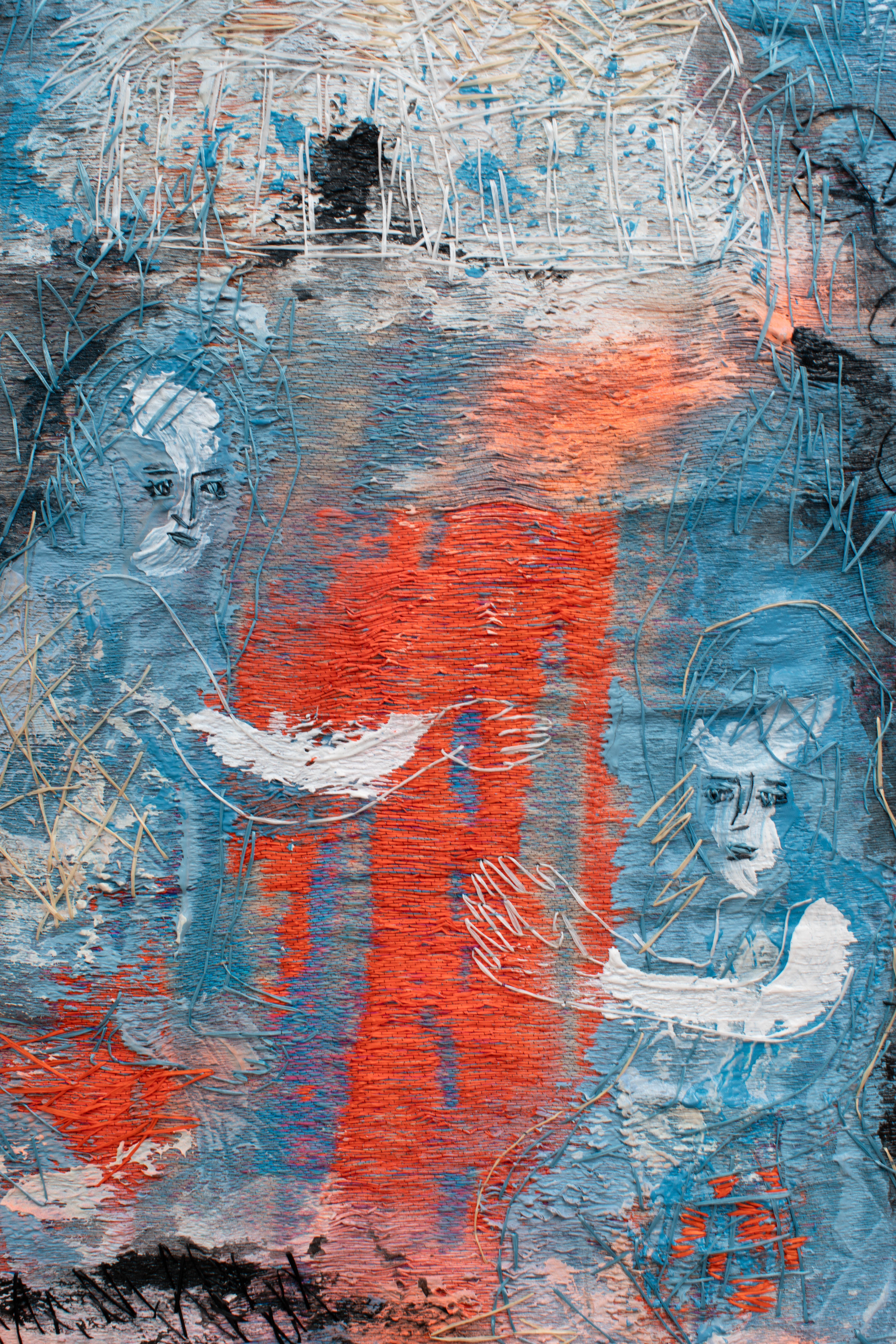
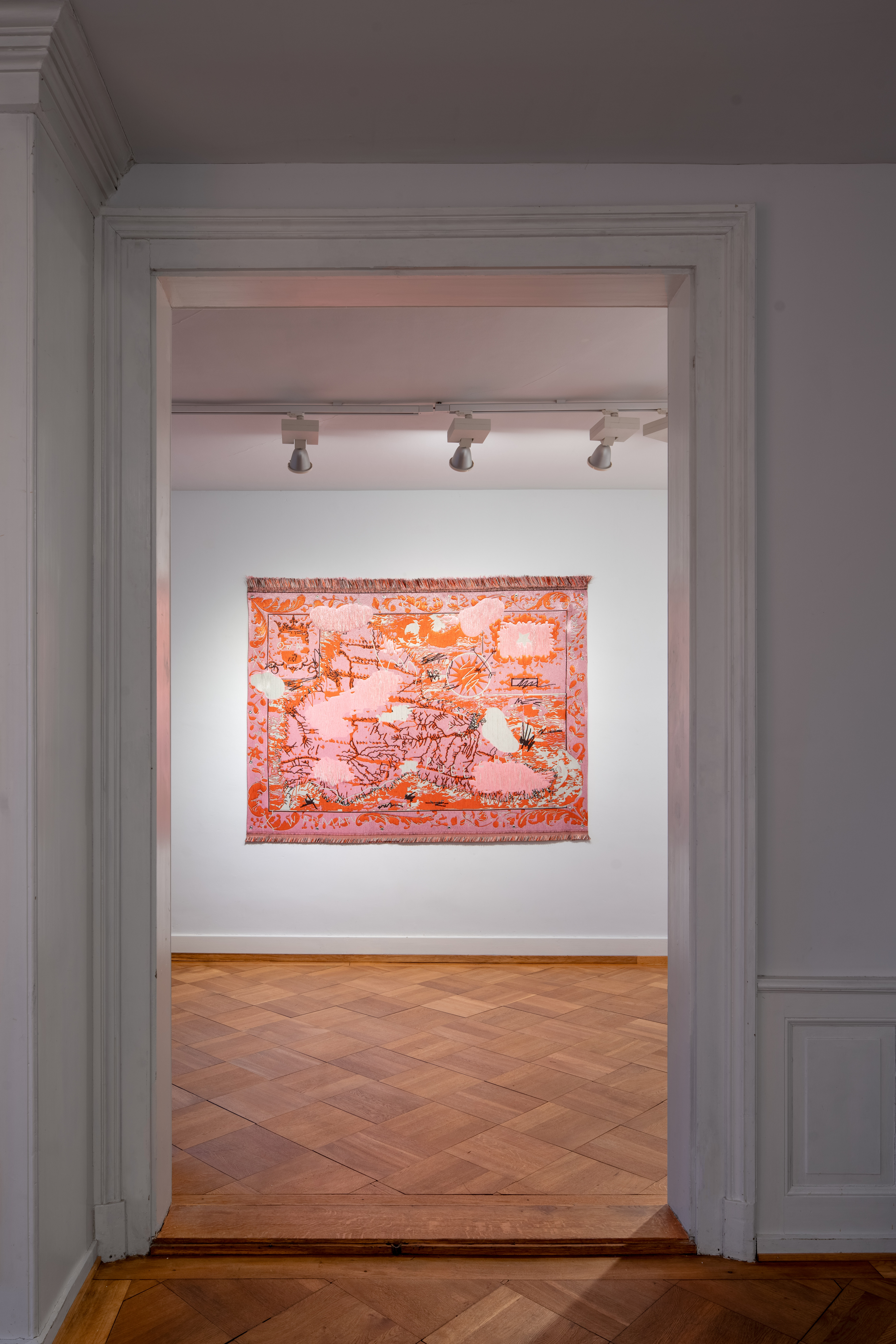
Tras la trama: mapa 2, 2025
jacquardweave (raffia)
63 x 110¼ in.
160 x 280 cm

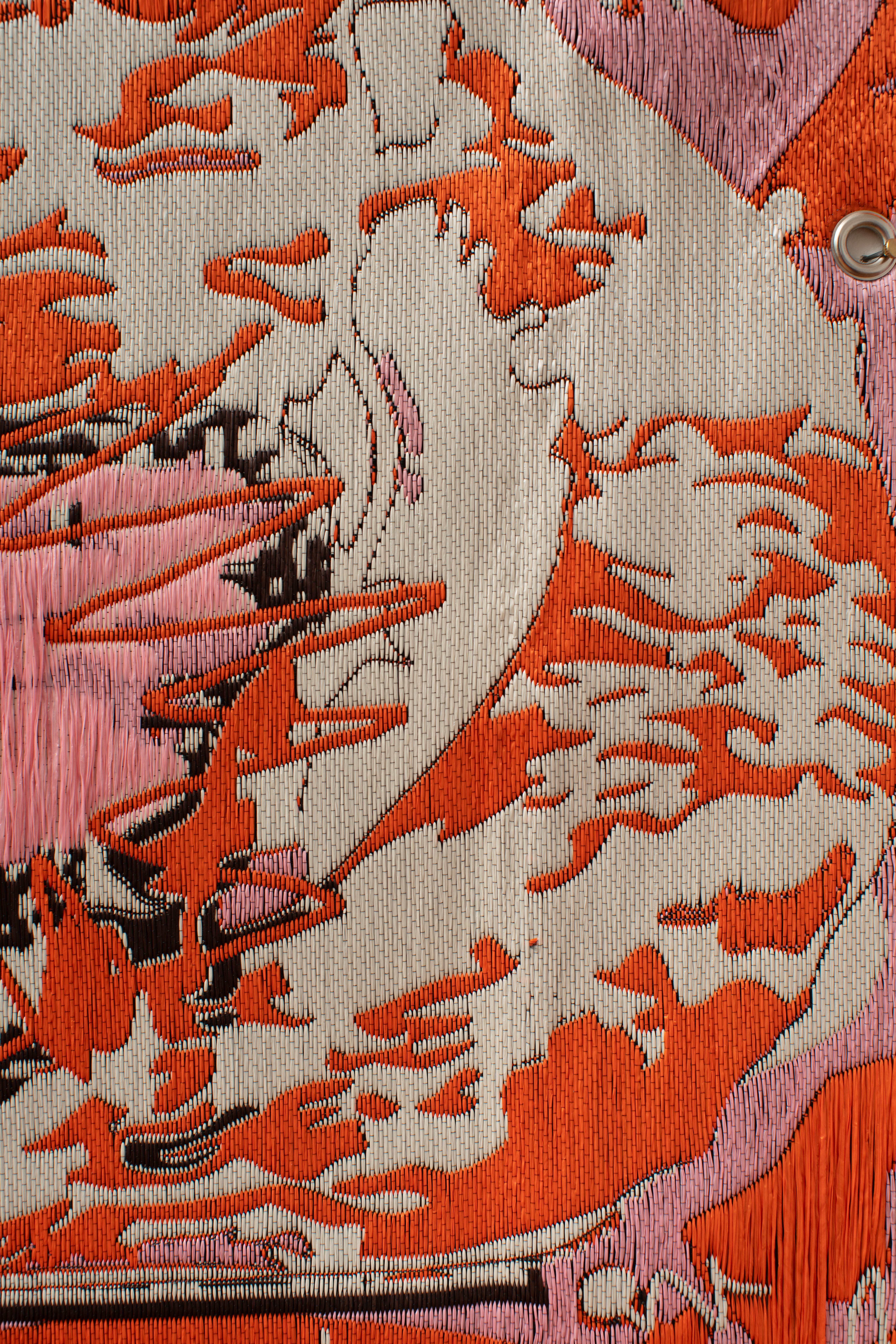
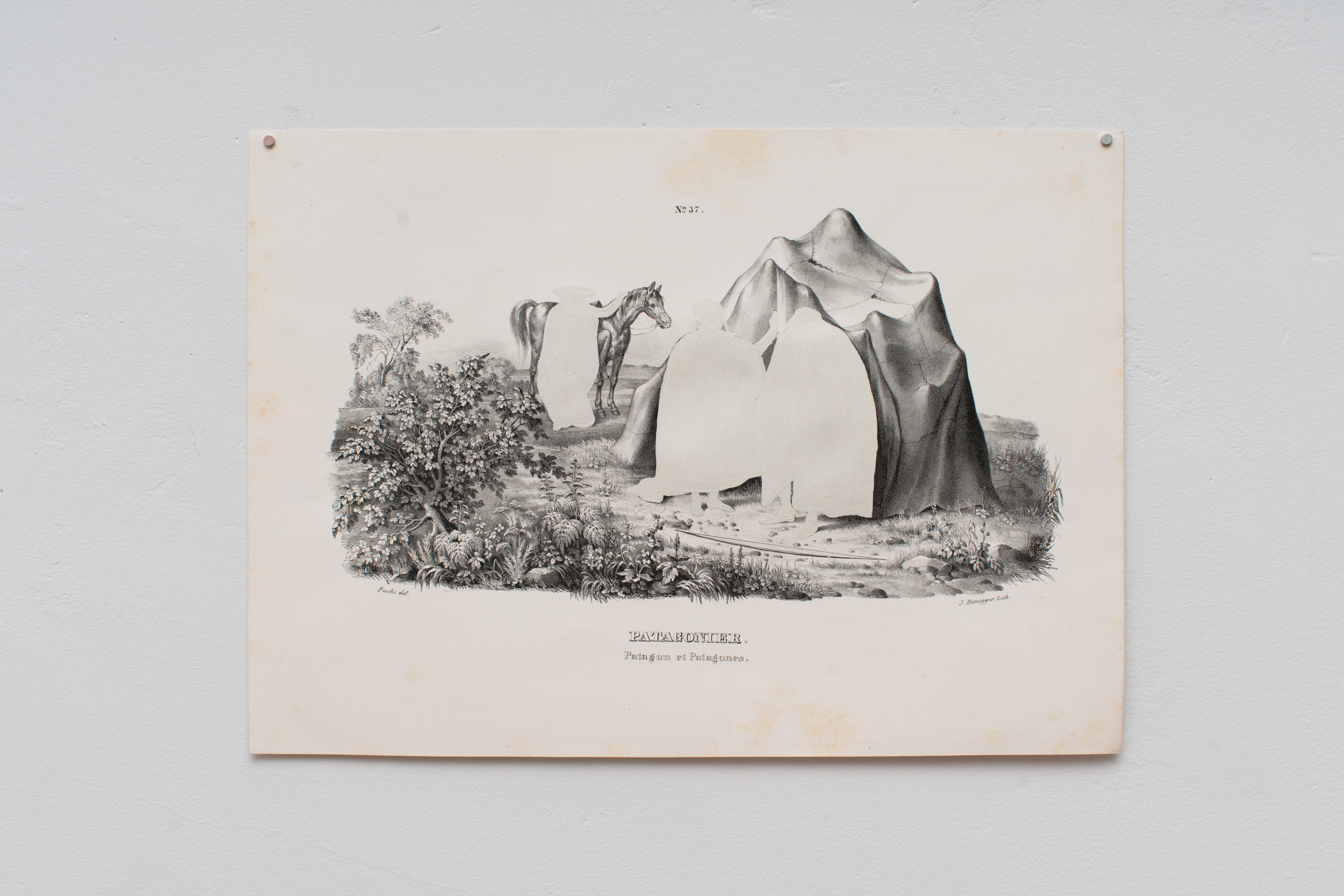
Metabolismo: Ajuste 2, 2024
acrylic on lithograph (1845) on paper
14 x 10 in.
35.56 x 25.40 cm
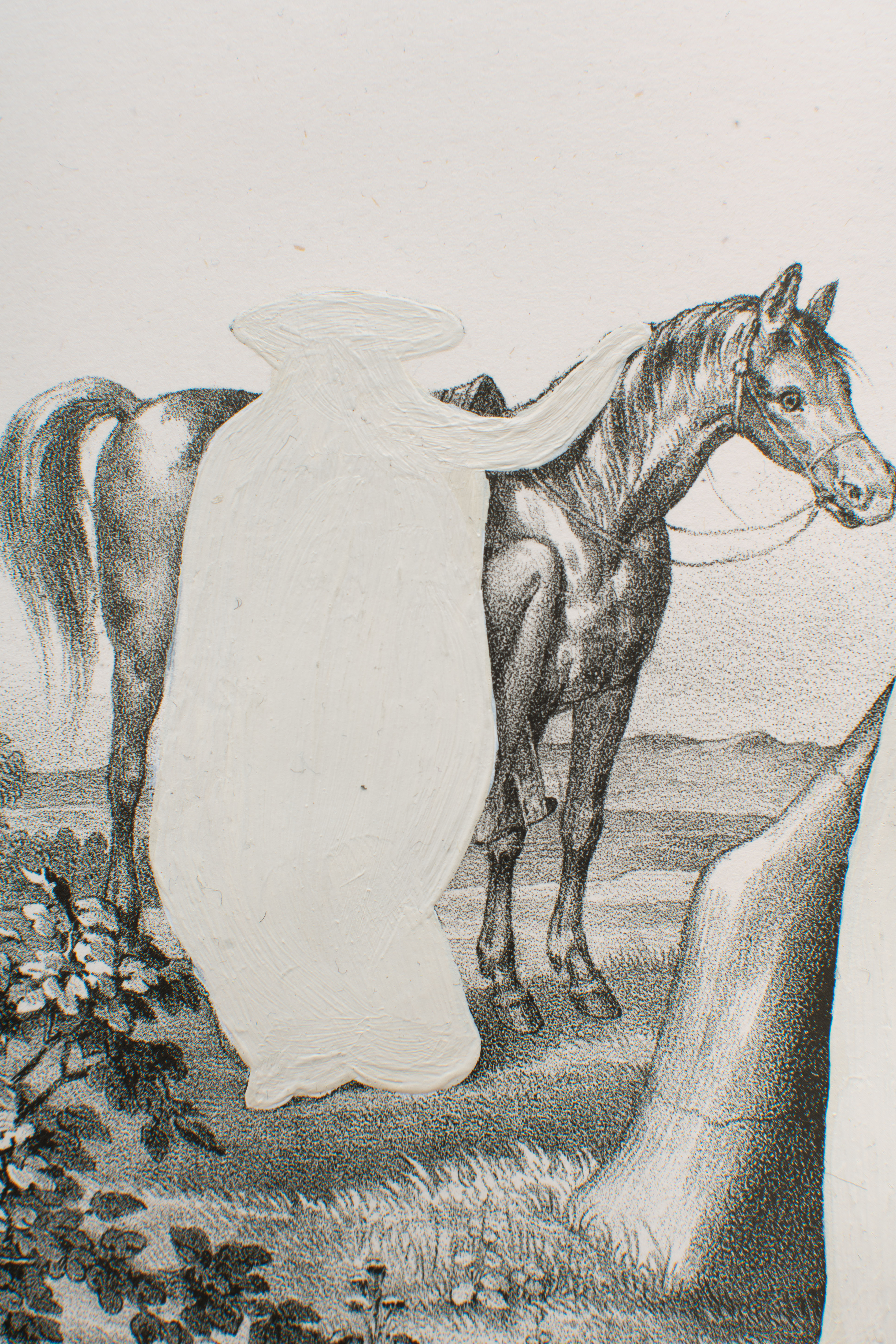

foye lawen, 2025
jacquardweave (cotton), hand-embroidered raffia, acrylic paint
36¼ x 31½ in.
92 x 80 cm


Selk´nam: Ona, 2024
jacquardweave (raffia), hand-embroidered raffia
86⅝ x 59 in.
220 x 150 cm
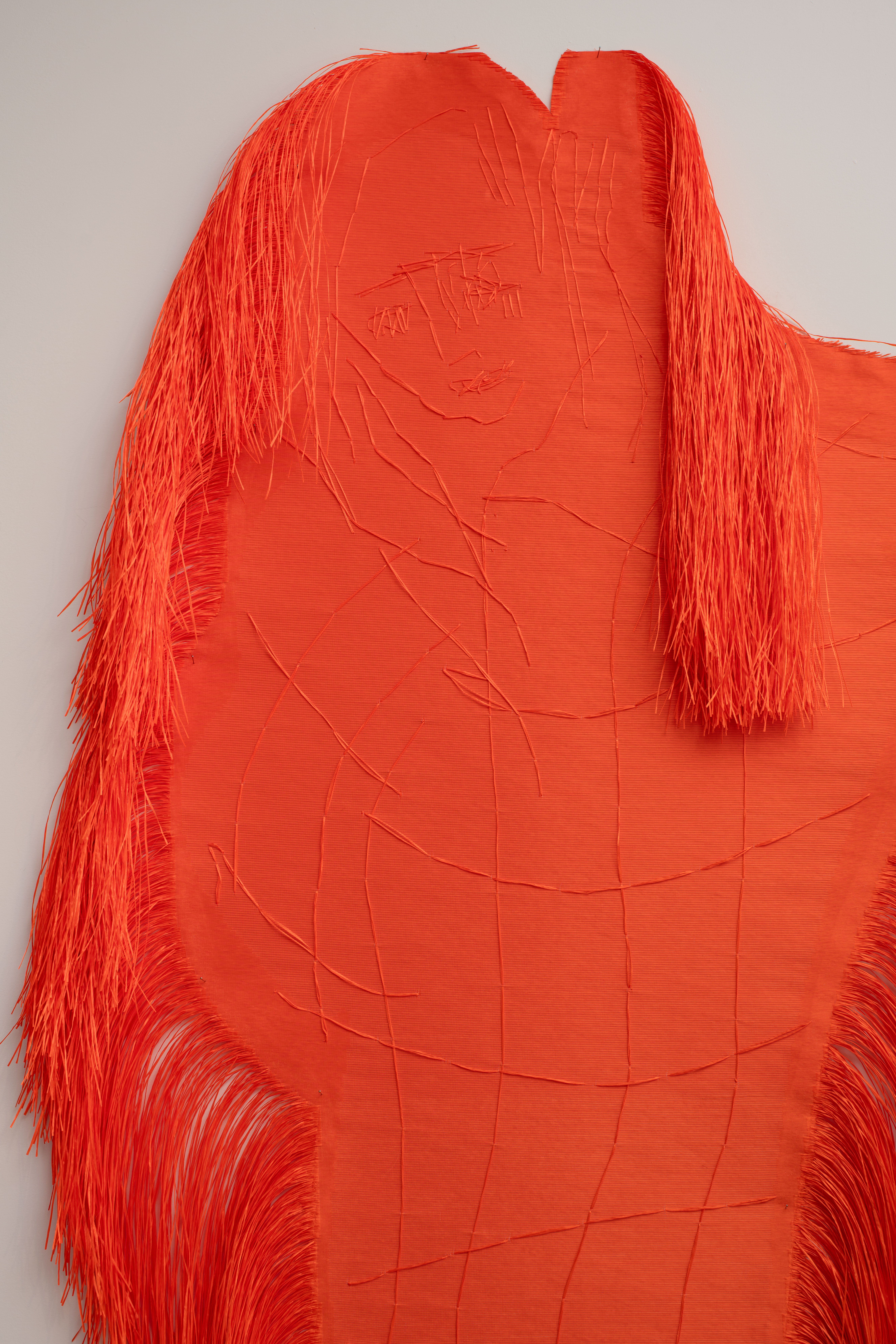


Tras la trama: mapa 1, 2025
jacquardweave (raffia)
122 x 124 in.
310 x 315 cm
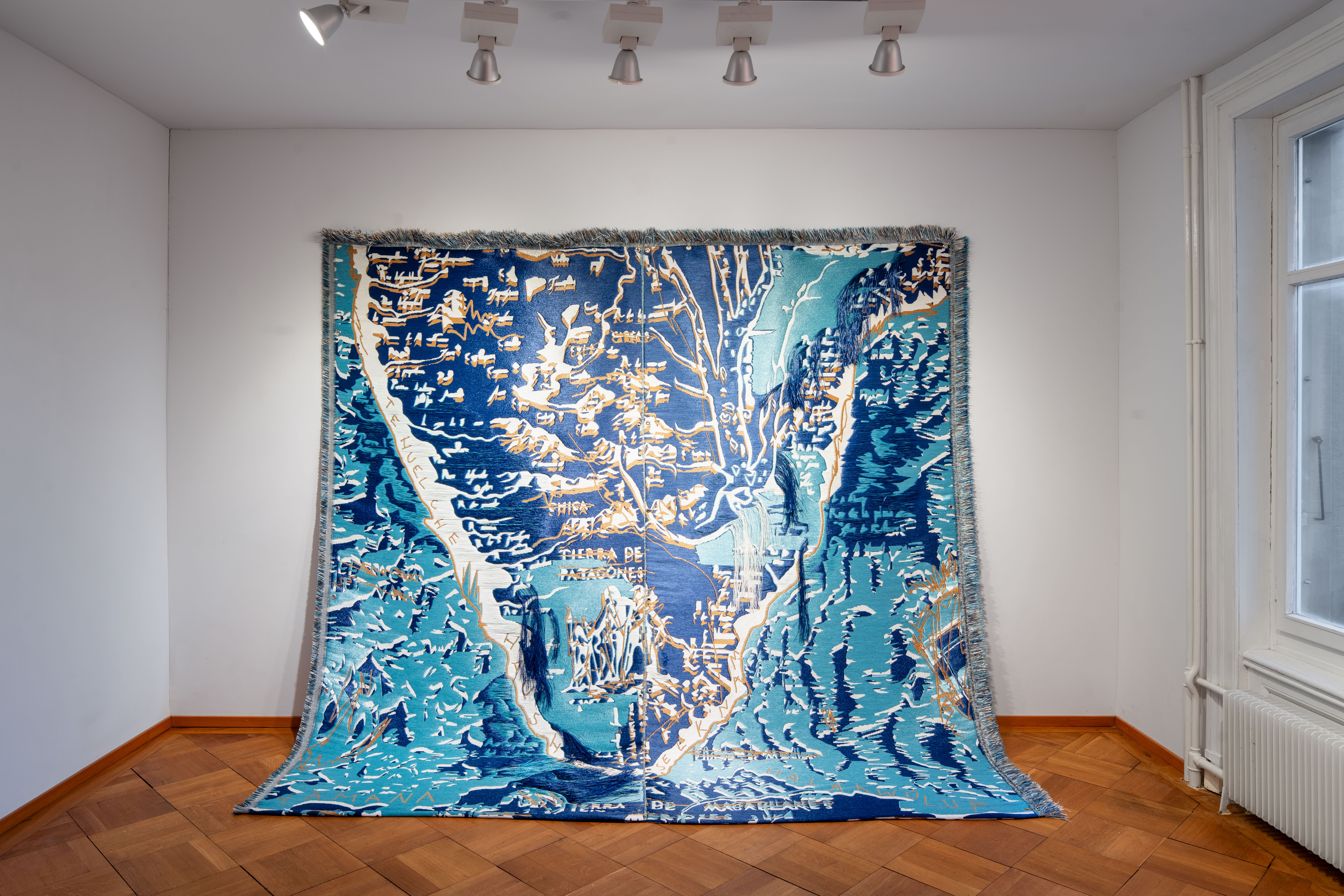

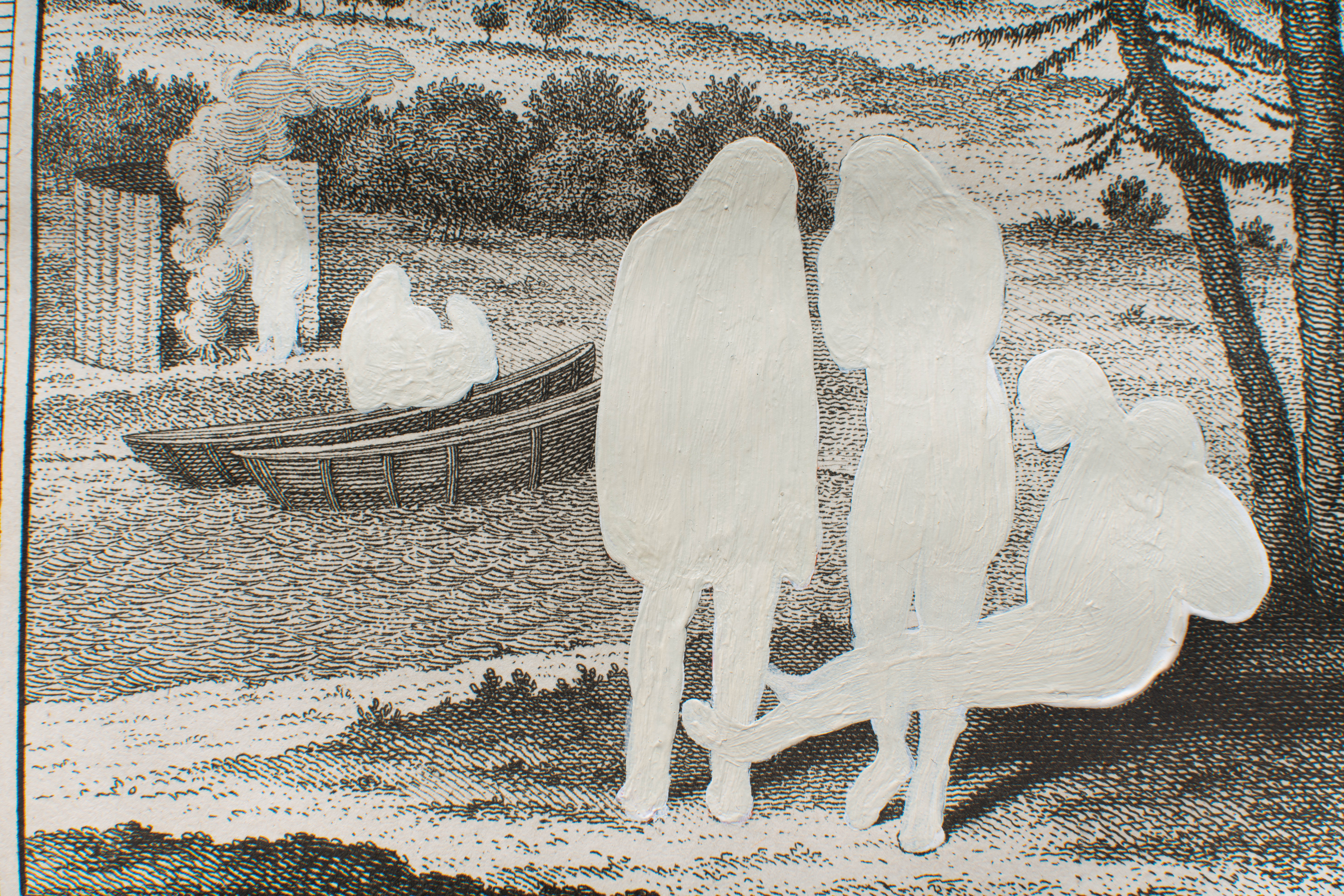
Selk´nam: Ona, 2024
jacquardweave (raffia), hand-embroidered raffia
86⅝ x 59 in.
220 x 150 cm
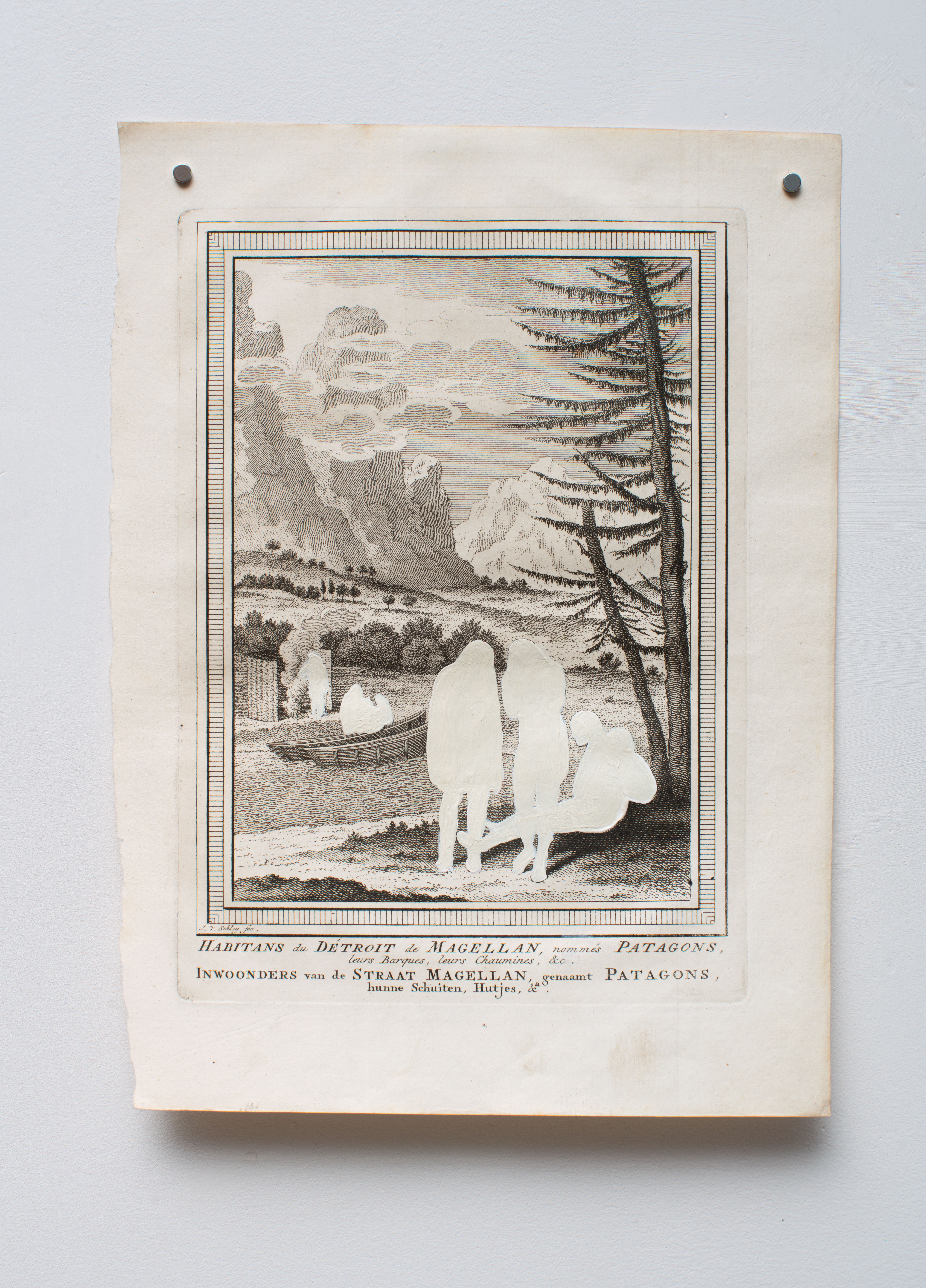
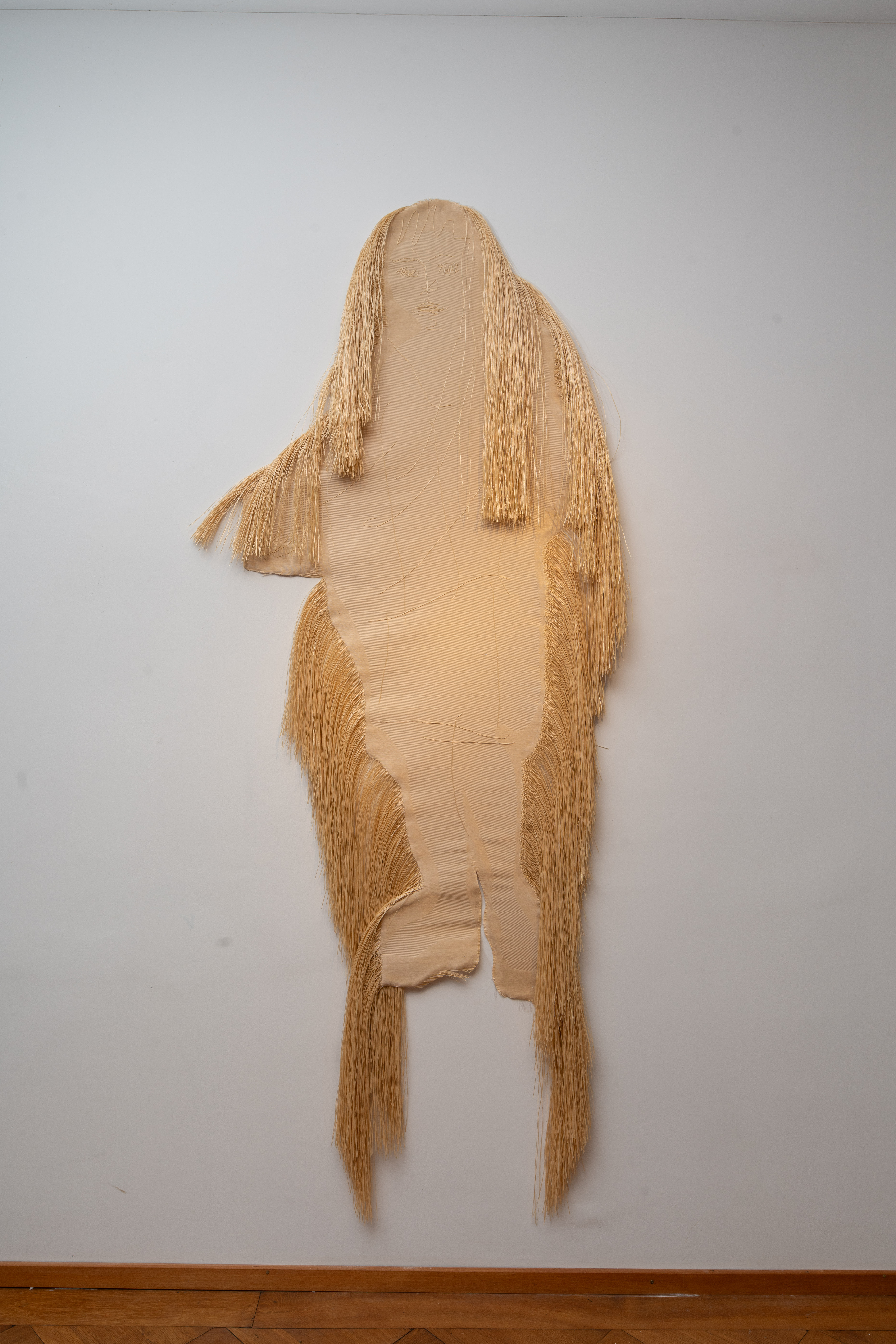
Yámana, 2024
jacquardweave (raffia), hand-embroidered raffia
82⅝ x 51⅛ in.
210 x 130 cm


Puelche, 2024
jacquardweave (raffia), hand-embroidered raffia
114⅛ x 55⅛ in.
290 x 140 cm

